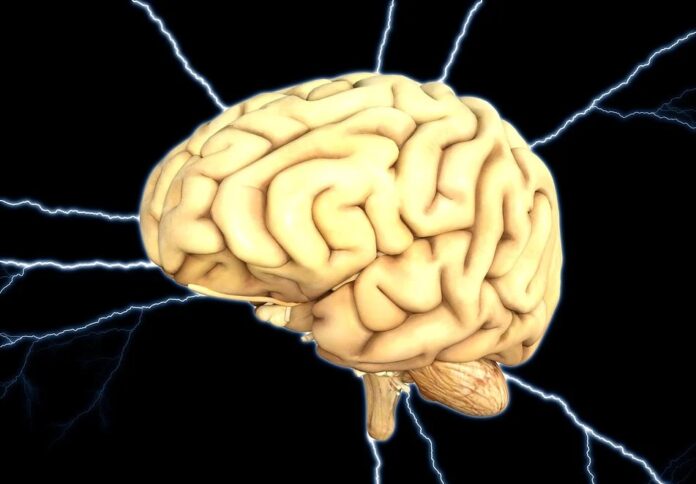Why are we the way we are? What makes each of us unique in the world? The answer is, without a doubt, in our brain. And more particularly, in the cerebral cortex, its largest and most complex part. As its name suggests, it covers the brain and gives it its typical rough appearance.
The cerebral cortex of the human being is one of the greatest wonders of nature, which has allowed us to go from using the simplest tools of our ancestors to creating tools as complex as a laptop or an international space station.
Thanks to the cerebral cortex we can build from the largest and most efficient buildings to the most beautiful cathedrals. We can have highly subtle social interactions and be able to identify a new type of virus such as SARS-CoV-2 in record time and develop an effective vaccine against it. Furthermore, in the cerebral cortex resides much of what makes each one of us unique: our personality.
This is how our cerebral cortex evolved
Like our hands and our nose, our cerebral cortex is the product of millions of years of evolution. After the great extinction of the dinosaurs 66 million years ago, the largest surviving mammals were not much larger than a vole, and their cerebral cortex weighed a few grams.
However, the incessant action of multiple factors continued to create mutations in the genome of these primitive mammals, just as it had been happening since the origin of life. Some of these mutations were harmful (such as those that cause skin cancer, for example), and were lost when their carriers perished. But other genetic mutations were beneficial, and carried over into subsequent generations.
Through this process repeated over millions of generations, the small and relatively simple cerebral cortex of those early mammals increased in size and complexity until it became the phenomenal organ that occupies our skulls today and allows us to understand this article.
As well, the study that we have carried out from the Institute of Neurosciences in Alicante has discovered one of these genetic changes that took place during evolution and that were key to the expansion of the human cerebral cortex.
Brain
The cortex is formed during embryonic development from neural stem cells, which constantly divide, giving rise to two daughter cells after each division. Early in development, the division of neural stem cells generates more stem cells, thus increasing in number.
From a certain moment, these begin to generate neurons (neurogenesis), which will finally make up the adult cerebral cortex. This is a critical step, because when cell division produces two neurons, there are no spare stem cells left to continue producing more neurons.
Therefore, the total number of neurons in the cortex depends on the number of neural stem cells that have to generate them. And the more neurons are generated and the more varied they are, the greater the size and complexity of the cerebral cortex. In the human embryonic brain the number of neural stem cells, their diversity and their capacity for proliferation are enormous, while in the small mouse embryo they are much smaller.
A gene that regulates brain stem cells
The new research our lab shows that the high proliferation capacity of neural stem cells from the human cortex, and from other species with a large cortex, is largely due to the MIR3607 gene, whose function remained completely unknown until now.
This gene belongs to the family of microRNAs, small RNA sequences that act as small orchestra conductors, regulating the activity of other genes. In this case, MIR3607 increases the proliferation of stem cells in the cortex so that they eventually generate a greater number of neurons.
Our team has reached this conclusion by analyzing the presence and function of this microRNA during the embryonic development of the cerebral cortex in multiple species of large-brained mammals. Our study has included the human being, through the cultivation of ‘mini-brains’ (cerebral organoids).
Why didn’t other mammals develop such complex cerebral cortices?
Evolution can be capricious, and it doesn’t always progress to larger, more complex organs or structures. Sometimes it makes them simpler or even removes them. This is called secondary loss, and it is known to happen to dolphins, whales, and other marine mammals for whom it was more useful for agile swimming to turn jointed arms and legs, and hands with fingers, into simple flippers.
Similarly, when the rodent lineage diverged from primates 75 million years ago, their evolution led them to reduce the size of the cerebral cortex compared to their common primate ancestor. What genetic changes and mutations caused this reduction in brain size in rodents?
Our study answers this enigma for the first time. It turns out that rodents do not express MIR3607 during embryonic development, unlike primates. That prevents their neural stem cells from proliferating very much. Consequently, few neurons are generated, and the cortex ends up having a small size.
That is to say: thanks to the appearance of the gene MIR3607 the mammalian brain It grew in size during evolution, and it still needs to be kept active by stem cells for our brains to be their proper size. Otherwise, cortical development and neurogenesis are impaired, leading to much smaller size, as occurred in rodents.
A find that changes textbooks
This discovery It helps us understand how evolutionary forces shaped our brains into what they are today. And also, how those same mechanisms have shaped the brains of other species, changing what the textbooks say. The finding also has an impact at the clinical level, since the MIR3607 gene is now a possible genetic diagnostic marker for congenital brain malformations; in particular, those that affect brain size, such as microcephaly.
Reference article: https://theconversation.com/the-gene-that-made-our-brain-special-175937













Add Comment